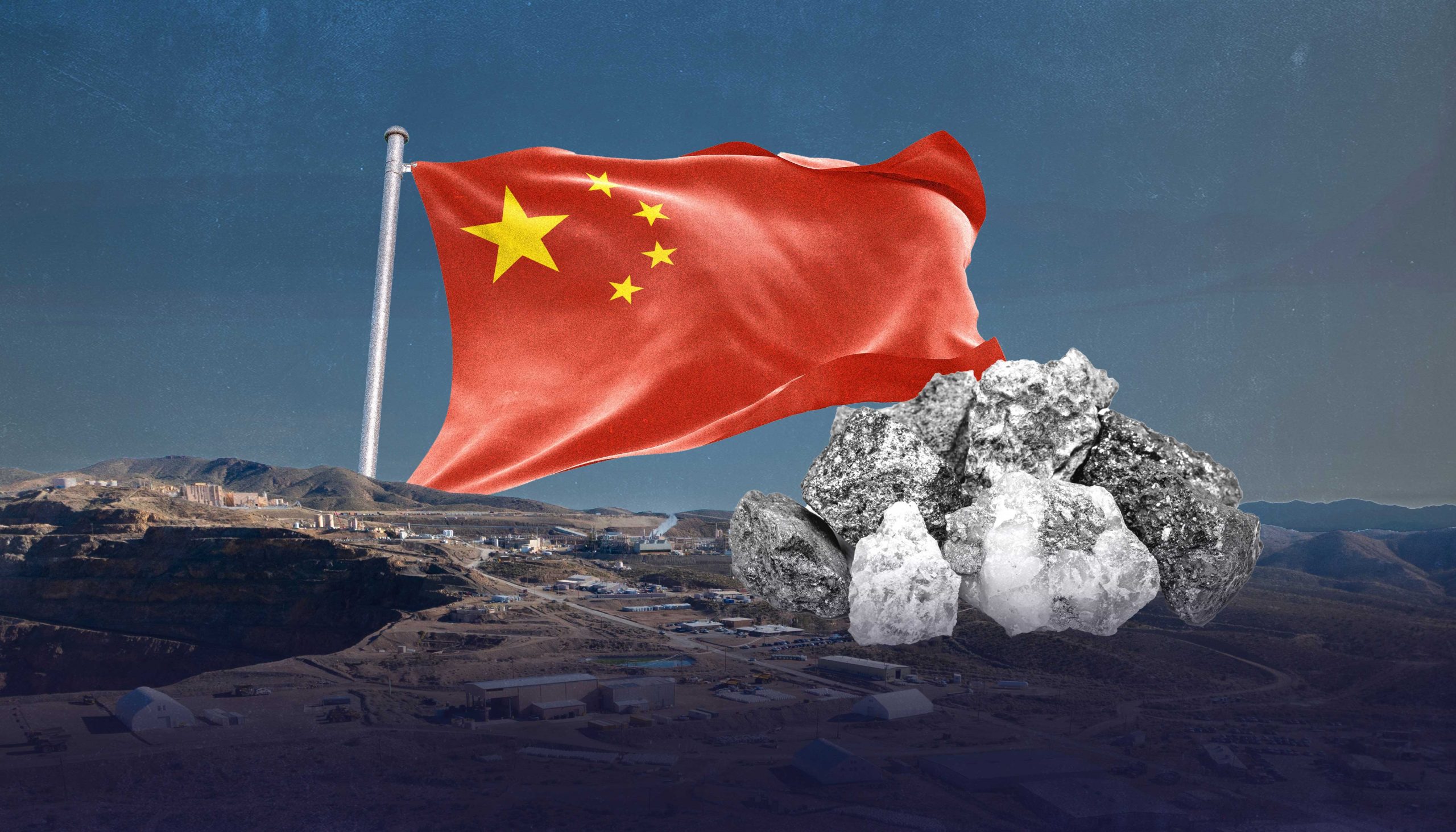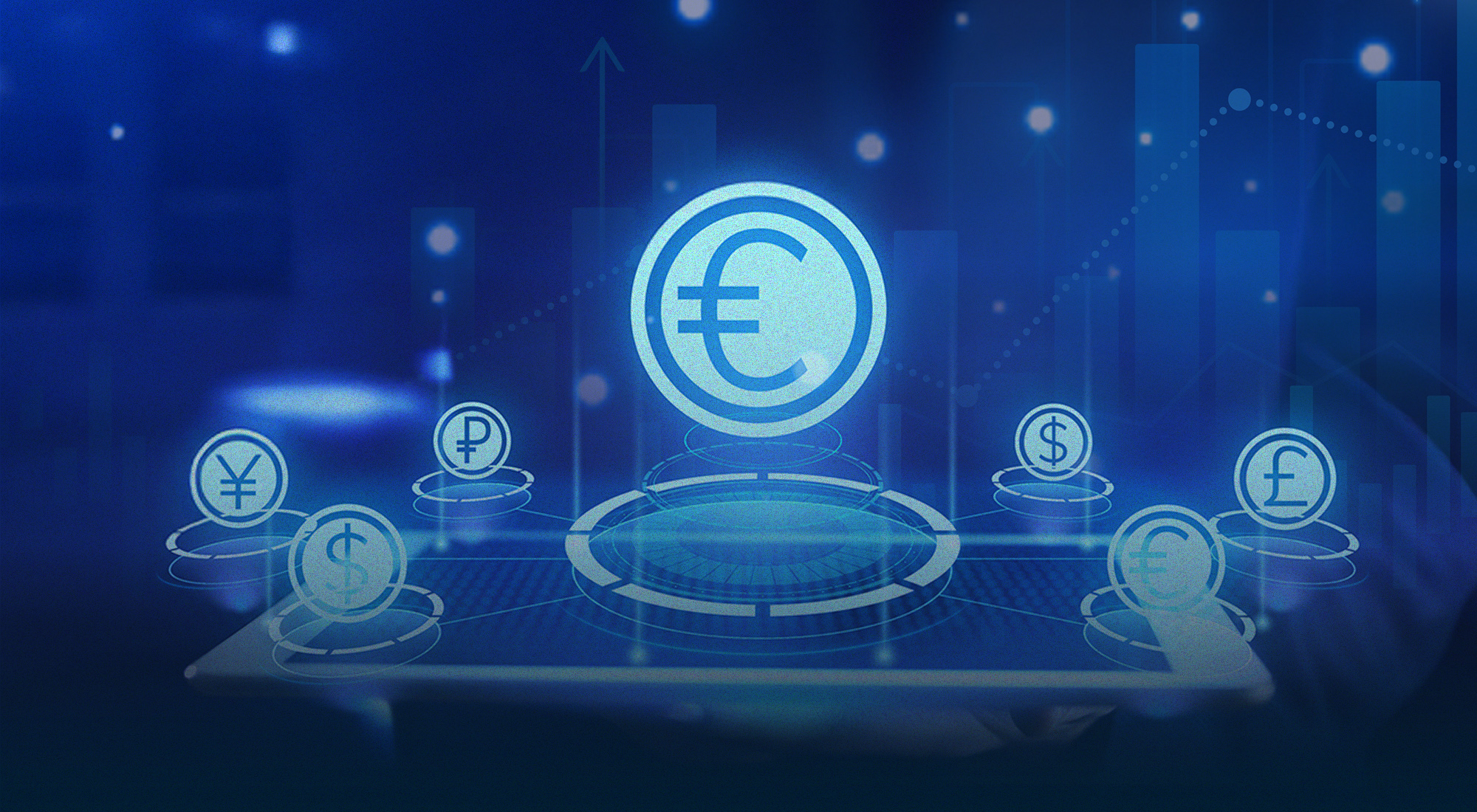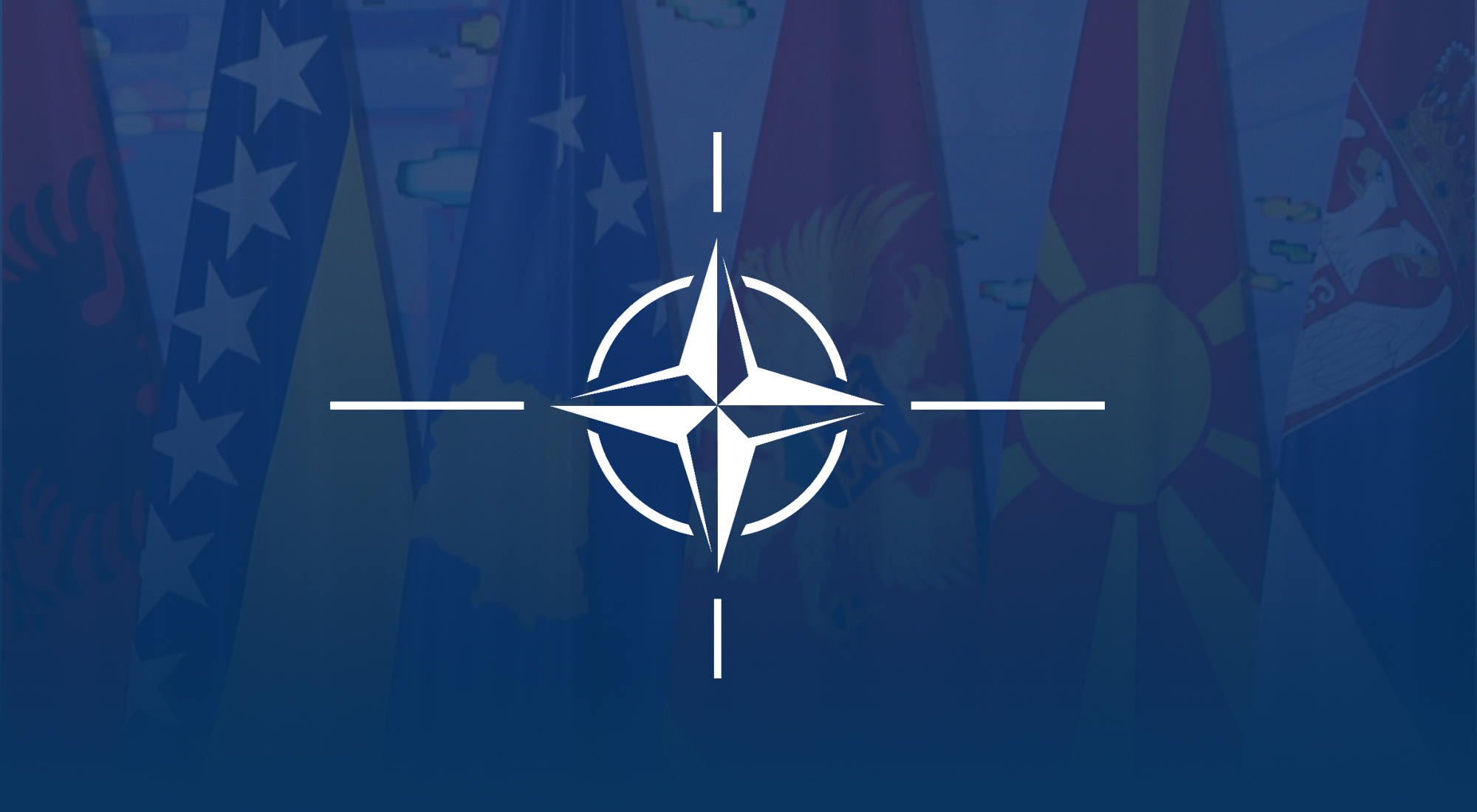While Africa and Latin America have received significant attention as battlegrounds in this resource competition, Central Asia has emerged as an increasingly important theater. Central Asia’s strategic importance in the critical minerals landscape stems from its substantial untapped reserves, geographic proximity to China, historically established infrastructure connections, and the region’s evolving geopolitical positioning between major powers. Recognizing these advantages, China has pursued a multifaceted engagement strategy across the region, tailoring its approach to each country’s specific mineral endowments, economic needs, and political considerations.
Critical mineral reserves of Central Asia
While Central Asia is traditionally known for its extensive oil and gas resources, the region also possesses rich and largely untapped reserves of critical minerals. These reserves represent significant proportions of global critical mineral deposits. Interest in developing these resources extends beyond external powers; the Central Asian countries themselves are eager to utilize these resources to strengthen their positions on the global stage and drive economic development.
Kyrgyzstan has lifted moratoriums on mineral development to encourage exploration and production,[1] while Tajikistan provides legislative incentives, such as tax benefits and investment protection measures.[2] Kazakhstan has approved “The Comprehensive Plan for the Development of the Rare and Rare Earth Metals Industry for 2024–2028,” which aims for a 40% increase in investment and production volume.[3]
Similarly, Uzbekistan emphasized the importance of exploiting reserves of rare and rare-earth metals, including lithium, magnesium, molybdenum, germanium, vanadium, and indium. The country has launched a US$2.6 billion initiative (2025–2028) targeting 76 projects across 28 critical minerals, including tungsten, lithium, titanium, and vanadium.[4]
In this context, China’s growing appetite to secure critical mineral resources aligns with Central Asian countries’ eagerness to utilize their resources to create dividends for economic development, creating complementary areas for China-Central Asia cooperation. However, China’s involvement in the critical mineral sector of Central Asia is not uniform but differs based on each country’s own strategy for resource utilization, such as extraction-centric versus processing-centric approaches.
China’s involvement in Central Asia’s critical mineral sector
Kyrgyzstan: A resource-extraction partnership with limited value addition
The mining landscape in Kyrgyzstan bears the distinct imprint of Chinese capital and technical expertise. Zijin Mining Group, among other Chinese firms, has established commanding influence over the country’s gold sector. At the Taldybulak Levoberezhny Gold Mine, Zijin holds a controlling 60% stake alongside Kyrgyzaltyn JSC’s 40% share, extracting more than 3 tons of gold annually from what has become the nation’s third-largest gold operation.[5]
President Japarov’s administration has recently pivoted toward embracing critical minerals as economic drivers. Surging global demand has reshaped governmental priorities, resulting in policy shifts that actively encourage the resumption of exploration and exploitation at previously dormant mining sites. Further evidence of this commitment emerged when authorities lifted the long-standing moratorium on uranium mining, effectively signaling an open-door policy toward broader mining activities.[6]
Critical mineral development in Kyrgyzstan primarily follows an extraction-centric model rather than emphasizing domestic processing capabilities. While limited processing initiatives exist—such as the underground mine at Jerooy intended to enhance base metal production and processing—the overwhelming focus remains on the extraction and export of raw materials. This extraction-dominant approach precisely complements Chinese interests in the region.[7]
October 2024 witnessed a significant expansion of this extractive relationship when the Kyrgyz-Chinese joint venture Zhong Ji Mining inaugurated a US$143 million gold mining facility at the Solton-Sary deposit in Naryn. This operation has created employment for 350 residents while channeling approximately 12 billion soms into regional infrastructure development.[8]
Lithium has emerged as another focal point in Sino-Kyrgyz mineral cooperation. Ongoing discussions between Kyrgyz officials and China’s Zhicun Lithium Industry Group Company explore potential collaborative ventures spanning lithium exploration, extraction, and processing.[9] January 2025 marked a breakthrough in rare earth element development when Kyrgyzstan concluded negotiations with a Chinese enterprise to extract rare earth metals from the Kutessay deposit—a location rich in thorium, uranium, and various rare earth elements.[10]
Diplomatic efforts have formalized this resource relationship. In February 2025, Presidents Sadyr Japarov and Xi Jinping signed a comprehensive Memorandum of Understanding aimed at enhancing cooperation, specifically targeting minerals essential for clean energy technologies. This agreement strategically aligns Kyrgyzstan’s National Development Program with China’s 14th Five-Year Plan, with particular emphasis on investments in lithium, cobalt, and rare earth elements.[11]
The extraction-focused partnership between Bishkek and Beijing generates immediate economic benefits while simultaneously creating structural vulnerabilities. Revenue flows and employment opportunities represent tangible short-term gains for Kyrgyzstan. Short-term revenue generation has taken precedence over investment in processing infrastructure, potentially diminishing long-term economic returns from these finite resources. Recent governmental initiatives have attempted to address this imbalance through modified investment requirements, yet meaningful progress toward processing capacity remains limited compared to regional counterparts.
This predominantly extractive relationship creates a paradoxical situation for Kyrgyzstan, delivering immediate economic stimulus while potentially reinforcing dependence on raw material exports and constraining domestic industrial development. Long-term sustainability of this approach hinges on Kyrgyzstan’s capacity to gradually transition toward greater value addition, potentially by strategically utilizing Chinese investment to build indigenous processing capabilities rather than merely facilitating resource extraction.
Tajikistan: Balancing resource extraction with initial processing development
Beneath Tajikistan’s mountainous terrain lies a wealth of mineral resources awaiting development. Substantial deposits of antimony, gold, and silver complement significant reserves of uranium, lead, zinc, and recently discovered major concentrations of rare earth elements. These resources position Tajikistan as a potentially important player in global critical mineral markets despite its small economic footprint.
Chinese firms have established overwhelming dominance in Tajikistan’s mining sector, particularly in precious metals extraction. An impressive 75% of Tajikistan’s gold production now falls under Chinese control, with Zijin Mining Group’s Zarafshon joint venture standing as the preeminent operator. This venture manages two productive gold mines across northern Tajikistan, accounting for over 70% of national gold output.[12] Tajikistan possesses rich antimony reserves as well yet currently exports 78% of its antimony output to China for processing due to domestic infrastructure limitations.[13]
Tajikistan’s government actively courts foreign direct investment for its mining sector, intensifying these efforts in recent years as part of broader industrial development goals. China has emerged as the primary partner capable of providing both capital and technical expertise needed to develop these resources. This partnership mirrors China’s engagement with Kyrgyzstan, though with notable differences in downstream development.
The year 2023 marked a significant expansion of Chinese mining operations when Tibet Huayu Mining’s Talco Gold project commenced full-scale production. This operation targets an annual production of 2.2 tons of gold alongside 16,000 tons of antimony.[14] Further diversifying the mineral development landscape, Minister of Industry and New Technologies Sherali Kabir announced plans for a Chinese-funded lithium mining and processing facility near the Afghan border in Ishkashim, scheduled to open in 2024.[15]
Unlike Kyrgyzstan’s predominantly extraction-focused approach, Tajikistan harbors ambitions to develop domestic processing capacity that would enable the export of value-added products rather than solely raw materials. Agreements with Chinese partners increasingly reflect this aspiration, encompassing both extraction and initial processing operations.
Zarafshon exemplified this trend in 2023 by launching a US$119 million metallurgical plant dedicated to producing metallic copper. Simultaneously, Tajik-China Mining Industry Company began construction of a second-stage processing facility for lead, silver, and copper. These facilities integrate Tajikistan into China’s supply chains for electronics and various industrial applications.[16]
April 2025 witnessed groundbreaking on Tajikistan’s first major iron ore enrichment plant in the northern Sughd region, supported by Chinese technology and investment. This ambitious facility, scheduled for completion in 2031, will process 2.5 million tons of ore annually to produce 1.1 million tons of iron concentrate with 62-65% purity. The project serves the dual purpose of reducing Tajikistan’s dependence on imported steel while creating new export opportunities.[17]
Compared to Kyrgyzstan’s extraction-dominant model, China’s activities in Tajikistan demonstrate a more comprehensive approach focused on developing initial processing capabilities, particularly in converting raw ore into concentrates. This broader engagement strategy secures raw materials for Chinese industries while simultaneously fostering limited domestic processing capacity within Tajikistan.
This distinctive resource-development model creates a nuanced relationship that might be characterized as a resource-backed development strategy. While Chinese firms maintain predominant control over resource extraction, they simultaneously invest in rudimentary processing capabilities that enable Tajikistan to capture additional value from its mineral wealth. This approach generates opportunities for technology transfer and skills development while still ensuring China’s access to critical minerals needed for its industrial base.
Uzbekistan: Ambitious value-addition through strategic processing investments
Determined to break from its historical role as a raw material exporter, Uzbekistan has embarked on an ambitious transformation of its critical minerals sector. The government has launched an unprecedented initiative, with particular emphasis on developing domestic processing capabilities for tungsten, lithium, titanium, and vanadium—resources fundamental to high-tech manufacturing and renewable energy technologies.[18]
Chinese partnerships have proven instrumental in advancing this vision. These collaborations, unlike traditional extractive relationships, increasingly reflect Uzbekistan’s prioritization of domestic processing capacity development. Several major projects now underway illustrate this evolving dynamic.
In the Parkent district of the Tashkent region, China’s Limaomaoli Metal Company broke ground in 2024 on the sophisticated Syurenata mining complex. When completed, this integrated facility will not only extract 2.4 million tons of ore annually but also process this material into 1 million tons of iron ore concentrate, creating substantially more domestic economic value than raw ore exports.[19]
More ambitious still is China Mining Energy Group’s US$200 million investment in the Namangan region’s Chust district. This comprehensive copper project combines mining operations with advanced processing facilities designed to produce 30,000 tons of refined copper annually. The complex represents a significant technological leap for Uzbekistan’s mineral sector, introducing capabilities previously absent from the domestic economy.[20]
Beyond these active ventures, negotiations continue on even larger projects. A US$2.7 billion Chinese proposal aims to develop copper and silver deposits in the resource-rich Bobotog area,[21] while Boi Yi Da advances plans for an additional copper processing plant in Namangan.[22] These investments would substantially expand Uzbekistan’s processing footprint across multiple critical mineral categories.
The technological localization achieved through these partnerships serves Uzbekistan’s strategic objective of transitioning from simple resource extraction to sophisticated materials processing. By selectively partnering with Chinese firms willing to support domestic value addition, Tashkent advances its industrial ambitions while securing the capital and expertise needed for technological modernization.
This developing model of cooperation reveals China’s adaptability to Uzbekistan’s development priorities. Rather than insisting on raw material export arrangements that primarily benefit Chinese industries, Beijing has demonstrated willingness to accommodate Uzbekistan’s industrial strategy through investments that build domestic processing capacity. The resulting partnerships create more balanced economic relationships while still ensuring China maintains access to the processed materials critical to its manufacturing base.
Kazakhstan: Advanced processing partnerships in critical minerals
Astana has strategically positioned itself not merely as a source of raw materials but as an emerging hub for mineral processing and value addition. This sophisticated approach differentiates Kazakhstan sharply from the extraction-focused models seen in Kyrgyzstan and Tajikistan.[23] The mineral wealth beneath Kazakhstan’s vast territory has attracted substantial Chinese interest, yet the terms of engagement reflect Astana’s stronger negotiating position. Rather than accepting partnerships limited to extraction, Kazakhstan is looking for agreements that build domestic processing capabilities and technological expertise.
A landmark June 2024 agreement with China illustrates this approach perfectly. The deal established plans for one of Central Asia’s most sophisticated copper smelting facilities—a project far exceeding simple extraction operations. This advanced plant will not only process copper concentrate but also simultaneously yield valuable by-products, including refined gold, silver, and industrial sulfuric acid. Beyond meeting domestic copper product demand, the facility will produce high-grade copper cathode for export markets, critical components in power transmission systems and manufacturing equipment.[24]
Tungsten production represents another frontier in this evolving partnership. Kazakhstan recently launched its first tungsten processing plant in collaboration with Jiaxing International Resources Investment, a Chinese firm bringing essential technical expertise. This facility’s impressive 3.3-million-ton annual ore processing capacity yields concentrate containing 65 percent tungsten.
What truly distinguishes this project, however, is its ambitious second phase—construction of a deep processing facility capable of refining concentrate to 88.5 percent purity and manufacturing tungsten carbide, an essential material in cutting tools, drilling equipment, and defense applications.[25]
Perhaps the most ambitious among Kazakhstan’s critical mineral initiatives is a planned vertically integrated non-ferrous metals complex. This comprehensive facility will encompass an industrial park, mining operations, a processing plant, an electrolysis facility, and dedicated power generation. By introducing cutting-edge metallurgical technologies to Kazakhstan, this project promises to dramatically expand the country’s footprint in international markets for finished metal products.[26]
These developments reveal a stark contrast between Kazakhstan’s approach and those of its regional neighbors. While Kyrgyzstan and Tajikistan focus primarily on extraction with limited processing capabilities, Kazakhstan demands partnerships spanning the entire value chain from extraction through deep processing. This sophisticated strategy creates balanced relationships that serve Kazakhstan’s economic diversification agenda while still providing China with the processed materials its industries require.
Beijing’s willingness to adapt to Kazakhstan’s requirements demonstrates a pragmatic evolution in China’s regional resource strategy. By supporting Kazakhstan’s ambitions to climb the value chain, China secures reliable access to processed materials through partnerships more sustainable and mutually beneficial than simple extraction agreements. For Kazakhstan, this approach offers multiple advantages: reduced dependency on raw material exports, development of domestic technological capabilities, creation of higher-skilled employment, and retention of greater economic value within its borders.
Patterns and implications of China’s critical mineral engagement in Central Asia
China’s engagement with Central Asian countries in the critical minerals sector reveals a pattern of strategic adaptation that accommodates local priorities while securing essential resources for Beijing’s industrial needs. This multifaceted approach differs markedly across the region, reflecting both China’s pragmatism and the varying developmental stages and negotiating positions of Central Asian states.
In Kyrgyzstan, China’s approach remains predominantly extraction-focused, with limited investment in domestic processing infrastructure. This model delivers immediate economic benefits through revenue generation and employment opportunities but risks reinforcing long-term dependence on raw material exports. The relationship exemplifies how economic asymmetries shape resource partnerships, with Kyrgyzstan capturing minimal value from its mineral wealth while China secures needed raw materials.
Tajikistan represents an intermediate stage in this engagement spectrum. While Chinese firms still dominate extraction activities, their investments increasingly incorporate initial processing capabilities that enable Tajikistan to capture additional value from its resources. This resource-backed development model reflects Beijing’s willingness to accommodate limited value addition when necessary to secure access to strategic minerals while still maintaining predominant control over the resource value chain.
The partnerships with Kazakhstan and Uzbekistan demonstrate more advanced models of cooperation. Both countries have successfully leveraged their stronger negotiating positions and clearer industrial policies to secure Chinese investment in sophisticated processing facilities spanning multiple stages of the value chain. These relationships reflect China’s pragmatic adaptation to host country priorities when dealing with partners possessing greater agency and strategic clarity.
These varied approaches reveal a crucial insight: China’s critical mineral strategy in Central Asia is not monolithic but tailored to each country’s specific context. Where host countries possess clear industrial policies and negotiating leverage, Beijing demonstrates remarkable flexibility in accommodating domestic value addition. Where these elements are absent, China defaults to extraction-focused models that primarily serve its industrial requirements.
For Central Asian countries, these dynamics underscore the importance of developing comprehensive mineral strategies that extend beyond simple resource extraction. Kazakhstan and Uzbekistan’s relative success in securing processing investments highlights how strategic planning and policy coordination can enhance resource-based development outcomes. Conversely, Kyrgyzstan’s experience demonstrates the risks of prioritizing short-term revenue generation over long-term industrial capacity building.
For the global critical minerals landscape, China’s Central Asian engagement represents a significant strategic advance. By developing these partnerships, Beijing diversifies its critical mineral supply sources while establishing processing infrastructure that integrates seamlessly with its existing industrial base. These land-based supply routes also offer resilience against potential maritime disruptions that could affect China’s mineral imports from Africa, Australia, and Latin America.
Looking ahead, China’s differentiated engagement approach will likely become more pronounced as competition for critical minerals intensifies globally. The emergence of Western counter-initiatives, such as the Partnership for Global Infrastructure and Investment and the Minerals Security Partnership, may create new options for Central Asian countries seeking to diversify their mineral partnerships beyond China.
Ultimately, China’s engagement with Central Asia’s critical mineral sector reflects Beijing’s sophisticated understanding that resource security involves not just securing raw materials but establishing resilient, politically sustainable partnerships that accommodate host country priorities. This approach—adaptive, differentiated, and pragmatic—will likely shape China’s critical mineral diplomacy not just in Central Asia, but across its global resource relationships in the years ahead.
[1] “Kyrgyzstan Lifts Ban on Mining of Uranium and Thorium,” The Times of Central Asia, June 4, 2024, https://timesca.com/kyrgyzstan-lifts-ban-on-mining-of-uranium-and-thorium/.
[2] “Natural Resources of Tajikistan,” OECD, 2025, https://www.oecd.org/content/dam/oecd/en/events/2025/02/joint-meeting-foe-gatf-2025-/ppt-session-5-nazar-gatf-feb-2025.pdf.
[3] “Kazakhstan to Boost Investments in Rare Earth Metals Production,” The Astana Times, May 2, 2024, https://astanatimes.com/2024/05/kazakhstan-to-boost-investments-in-rare-earth-metals-production/.
[4] “Uzbekistan launches $2.6B initiative to bolster minerals sector,” Mining.Com, March 18, 2025, https://www.mining.com/uzbekistan-launches-2-6b-initiative-to-bolster-minerals-sector/.
[5] “Taldybulak Levoberezhny Gold Mine,” Zijin Mining Group, 2025, https://www.zijinmining.com/global/program-detail-71781.htm.
[6] “New Era of Mining Starts in Kyrgyzstan,” The Times of Central Asia, October 31, 2024, https://timesca.com/the-new-era-of-mining-starts-in-kyrgyzstan/.
[7] “Industrial output growth of 7.2 percent expected in Kyrgyzstan in 2025,” 24KG, October 11, 2024, https://24.kg/english/307902_Industrial_output_growth_of_72_percent_expected_in_Kyrgyzstan_in_2025/.
[8] “Kyrgyzstan launches gold mining plant at Solton-Sary deposit in Naryn,” Kyrgyz National News Agency, October 24, 2024, https://en.kabar.kg/news/kyrgyzstan-launches-gold-mining-plant-at-solton-sary-deposit-in-naryn/.
[9] “Chinese company considering lithium extraction in Kyrgyzstan,” Trend News Agency, June 27, 2024, https://en.trend.az/casia/kyrgyzstan/3916877.html.
[10] “Chinese company to mine rare earth metals in Kyrgyzstan,” 24KG, January 21, 2025, https://24.kg/english/317461_Chinese_company_to_mine_rare_earth_metals_in_Kyrgyzstan/.
[11] “Kyrgyzstan, China enhance investment cooperation in mineral development,” Trend News Agency, February 5, 2025, https://en.trend.az/casia/kyrgyzstan/4002051.html.
[12] “Tajikistan,” China-Central Asia, https://china-centralasia.org/en/project/11.
[13] Aruzhan Meirkhanova, “Can Central Asia Secure Growth With Rising Critical Minerals Investments?,” Carnegie Endowment for International Peace, January 27, 2025, https://carnegieendowment.org/russia-eurasia/politika/2025/01/central-asia-crm-offers?lang=en.
[14] “China’s Huayu launches Tajikistan antimony-gold project,” St. Louis Group, April 20, 2023, https://thestlouisgroup.com/china-launches-antimony-gold-project/.
[15] Edward Lemon and Ruslan Norov, “How China is Adapting to Tajikistan’s Demand for Security Cooperation,” Carnegie Endowment for International Peace, 2025, https://carnegieendowment.org/posts/2025/03/how-china-is-adapting-to-tajikistans-demand-for-security-cooperation?lang=en.
[16] “Mining Output Grows in Tajikistan,” The Times of Central Asia, 2024, https://timesca.com/mining-output-grows-in-tajikistan/.
[17] “Tajikistan breaks ground on major iron ore enrichment plant in Sughd,” Trend News Agency, April 12, 2025, https://en.trend.az/casia/tajikistan/4029857.html.
[18] “Uzbekistan launches $2.6B initiative to bolster minerals sector,” Mining.Com, March 18, 2025, https://www.mining.com/uzbekistan-launches-2-6b-initiative-to-bolster-minerals-sector/.
[19] “Chinese company to invest $50 million in new mining complex in Tashkent region,” Kun.uz, July 23, 2024, https://kun.uz/en/53684904.
[20] “China Mining Energy Group to Partner in Uzbek Copper Project,” The Times of Central Asia, March 27, 2024, https://timesca.com/china-mining-energy-group-to-partner-in-uzbek-copper-project/.
[21] “China proposes $2.7 billion investment in copper and silver mines in Surkhandarya,” Kun.uz, November 23, 2024, https://kun.uz/en/news/2024/11/23/china-proposes-27-billion-investment-in-copper-and-silver-mines-in-surkhandarya.
[22] “Chinese investor plans to build a copper processing plant in Namangan,” Uz Daily, September 5, 2024, https://www.uzdaily.uz/en/chinese-investor-plans-to-build-a-copper-processing-plant-in-namangan/.
[23] “Kazakhstan Showcases Investment Opportunities in the Mining Sector at PDAC-2025,” Kazakhs Invest, 2025, https://invest.gov.kz/media-center/press-releases/kazakhstan-showcases-investment-opportunities-in-the-mining-sector-at-pdac-2025/.
[24] Official Information Service of the Prime Minister of the Republic of Kazakhstan, “Agreement for construction of $1.5bn copper smelter signed in Kazakhstan Government,” June 3, 2024, https://primeminister.kz/en/news/agreement-for-construction-of-a-15bn-copper-smelter-signed-in-kazakhstan-government-28564.
[25] “Kazakhstan Launches First Tungsten Plant in Almaty Region,” The Astana Times, November 4, 2024, https://astanatimes.com/2024/11/kazakhstan-launches-first-tungsten-plant-in-almaty-region/.
[26] Prime Minister of the Republic of Kazakhstan, “First Deputy Prime Minister Roman Sklyar held a meeting with the leadership of East Hope Group,” 2025, https://primeminister.kz/ru/news/pervyy-zamestitel-premer-ministra-rk-roman-sklyar-provel-vstrechu-s-rukovodstvom-east-hope-group-29702.








